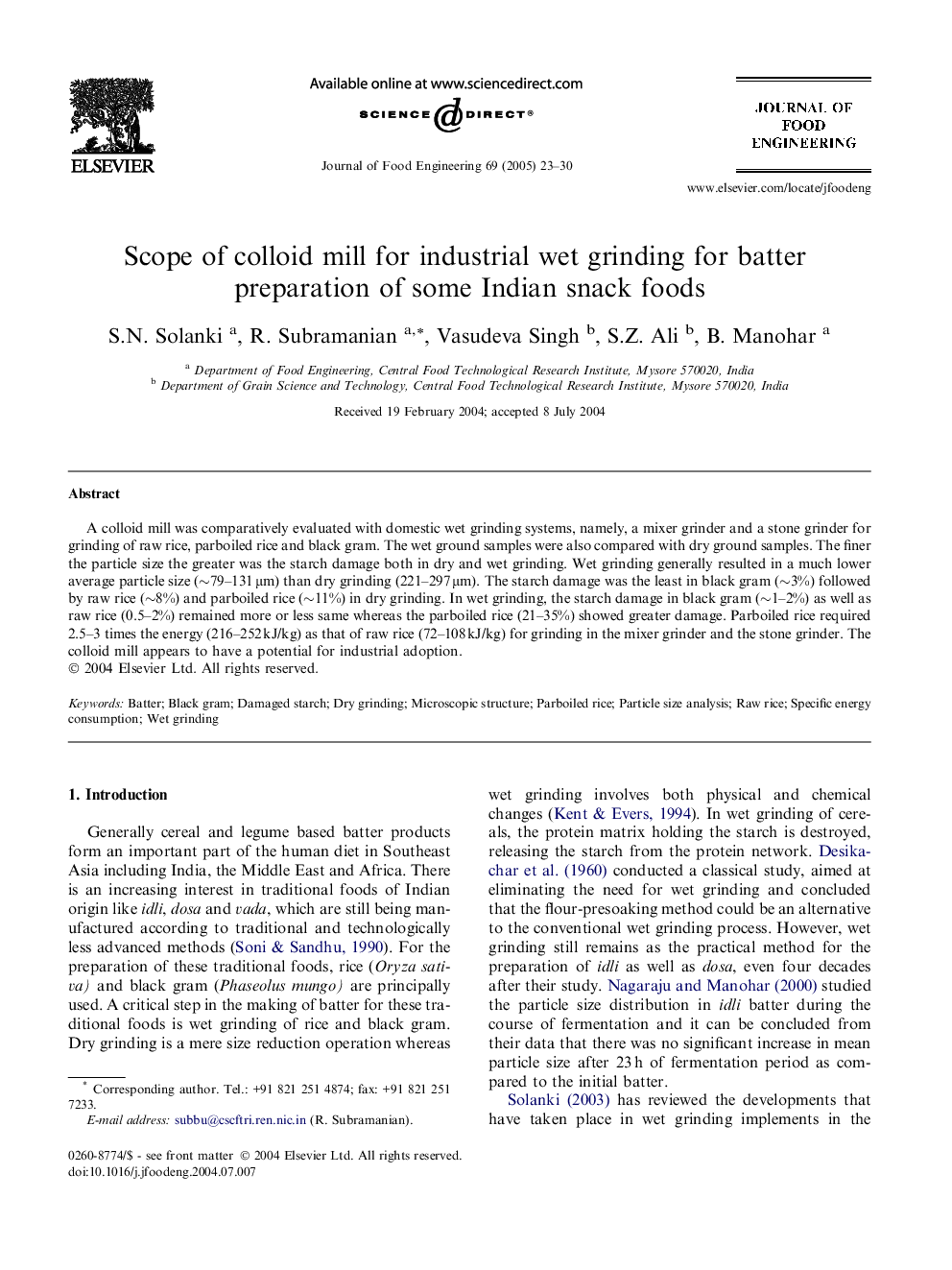| Article ID | Journal | Published Year | Pages | File Type |
|---|---|---|---|---|
| 10278268 | Journal of Food Engineering | 2005 | 8 Pages |
Abstract
A colloid mill was comparatively evaluated with domestic wet grinding systems, namely, a mixer grinder and a stone grinder for grinding of raw rice, parboiled rice and black gram. The wet ground samples were also compared with dry ground samples. The finer the particle size the greater was the starch damage both in dry and wet grinding. Wet grinding generally resulted in a much lower average particle size (â¼79-131 μm) than dry grinding (221-297 μm). The starch damage was the least in black gram (â¼3%) followed by raw rice (â¼8%) and parboiled rice (â¼11%) in dry grinding. In wet grinding, the starch damage in black gram (â¼1-2%) as well as raw rice (0.5-2%) remained more or less same whereas the parboiled rice (21-35%) showed greater damage. Parboiled rice required 2.5-3 times the energy (216-252 kJ/kg) as that of raw rice (72-108 kJ/kg) for grinding in the mixer grinder and the stone grinder. The colloid mill appears to have a potential for industrial adoption.
Keywords
Related Topics
Physical Sciences and Engineering
Chemical Engineering
Chemical Engineering (General)
Authors
S.N. Solanki, R. Subramanian, Vasudeva Singh, S.Z. Ali, B. Manohar,
